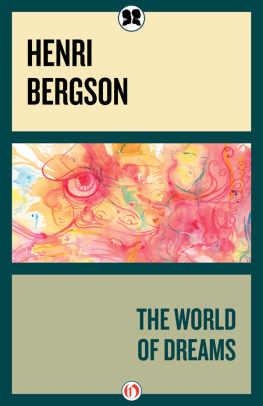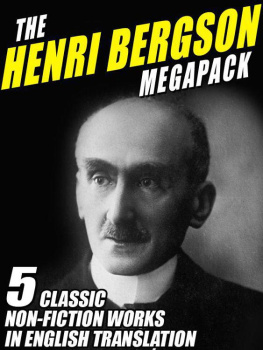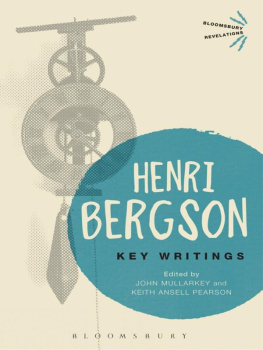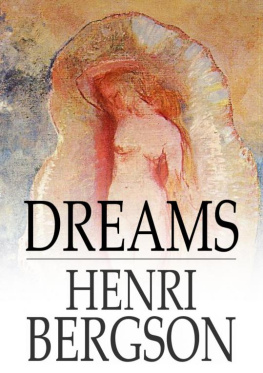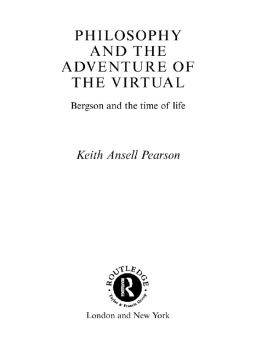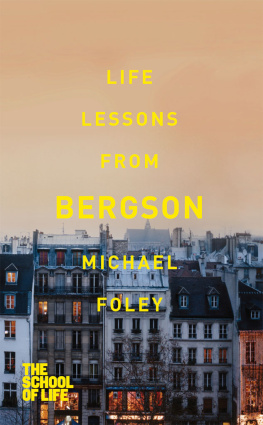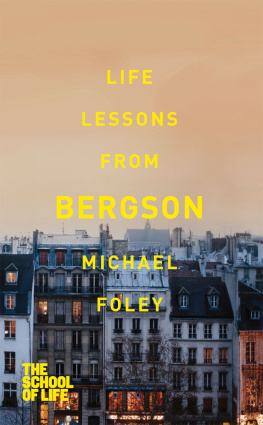THE WORLD OF DREAMS
What, then, is a dream? I perceive objects, yet there is nothing. I see men. I think that I speak to them and hear them answer me, yet there is no one and I say nothing. Everything happens as if there were real things and real persons, but upon awakening I find that everything has vanished. How does this come about?
To begin with, is it really true that there is nothing in the dream? In other words, is there not some perceptible matter that we can see, hear, feel, etc. when we are asleep as well as when we are awake?
Close your eyes and consider carefully what occurs on the field of vision. Many people when questioned on this point will say that nothing happens and that they see nothing. That is because a certain amount of practice is required for proper self-observation. But let the same people take the first step toward making the necessary effort and gradually through attentiveness they will be able to single out many different things. At first generally, a dark background. Occasionally against the dark background, bright dots which come and go, rise and fall, slowly and sedately. More often, spots of a thousand colors, sometimes dull but at other times and with certain people of an extraordinary brilliance which reality could never match. These spots expand and contract, change their shape and colors, constantly displace one another. Sometimes the change is slow and gradual but sometimes it is a whirlwind of bewildering swiftness.
What is responsible for this whole phantasmagoria? Physiologists and psychologists have studied the changing medley of colors; to describe the phenomenon they have used such terms as ocular spectrum, color spots, and phosphenes; they have attributed it to slight modifications that occur at all times as a result of retinal circulation and to pressure exerted on the eyes by the closed lids, resulting in the mechanical excitation of the optic nerve. But the explanation of the phenomenon and the terms used to identify it are not of primary importance. Everyone is familiar with the phenomenon. The point that I wish to make here is that it constitutes the raw material, the stuff that we use in shaping our dreams.
Some thirty or forty years ago Alfred Maury, and at about the same time DHervey, noticed that when we are about to fall asleep, the color spots with their changing shapes consolidate, become fixed, take on precise outlinesthe very outlines of the objects and persons that will appear in our dreams. But that observation is slightly suspect, for it was made by psychologists who were half-asleep. Recently an American psychologist, Professor Ladd of Yale, devised a more exact method; his method is hard to apply, however, for it requires special training. It consists in acquiring the habit of keeping the eyelids closed on awakening in the morning and of retaining for a short while the dream which otherwise would soon vanish from the field of vision and also, doubtlessly, from memory. Then the figures and objects in the dream are seen to dissolve gradually into phosphenes, the color spots which the eyes actually perceive when the lids are closed. Suppose, for instance, that in your dream you were reading a newspaper. On awakening you might find that in reality the well-defined outlines were blurred and that there remained nothing more than a white spot with scattered black lines. Or again, suppose that in your dream you were out on the open sea. As far as you could see, there stretched an endless expanse of yellowish-gray waves with their crowns of white spume. You might find on awakening that everything had fused into a huge spot, half yellow and half gray, sprinkled with bright dots. The spot was there and the bright dots were there all along. This would mean that our perception really has at its disposal during sleep a sort of visual dust, and that this dust is the source of our dreams.
But is it the only source? Restricting ourselves for the moment to the sense of sight, we must join to these visual sensations that might be called internal those that continue to come to us from an external source. Our eyes can still distinguish light from darkness and to a certain extent different kinds of light even after the lids are closed. The sensations of light that come from without are responsible for many of our dreams. The sudden lighting of a candle in his room will suggest to the sleeper, unless he is sleeping too soundly, a dream dominated by the image of fire. Allow me to quote two of Tissis observations on this point:
Leon Bdreamed that the theater in Alexandria was on fire; the flames lighted up the whole district. Suddenly he found himself transported to a fountain in the middle of a great forum. Fire spanned the chains linking the thick posts set up around the fountain. Then he found himself back in Paris at the exposition, which was on fire... ; he witnessed some heart-rending scenes, etc. He awoke with a start. On his eyes fell the rays from a dark lantern which the night nurse had flashed toward his bed in passing.
Bertrand Mdreamed that he had enlisted in the marine infantry in which he had previously served. He went to Fort-de-France, Toulon, Lorient, the Crimea, and Constantinople. He saw lightning and heard thunder.... Finally he took part in a battle in which he saw fire leap from the mouths of cannon. He awoke with a start. Like Bhe had been awakened by a flash of light from the dark lantern turned on him by the night nurse.
Such are the dreams often caused by sudden exposure to bright light.
Quite different are the dreams suggested by soft, continuous light, like moonlight. A. Krauss relates that upon awakening one day he discovered that he was still extending his arms toward something which he saw in his dreams as the image of a girl. Slowly the image fused with that of the full moon, which was bathing him in its rays. Oddly enough, there are other examples of dreams in which moonlight, caressing a sleepers eyes, gives rise to visions of maidens. This suggests a kindred origin for the classical fable of Endymion, the shepherd thrown into a deep sleep and caressed while sleeping by Selene, the goddess of the moon.
I have been discussing only visual sensations. They are the main ones. But auditive sensations also play an important part in our dreams.
First, our ears perceive internal sensationshumming, buzzing, whistlingwhich are hard to isolate and identify in the waking state but which are distinct in sleep. Next, we continue after falling asleep to hear external noises. A creaking piece of furniture, a crackling fire, the rain lashing a window, the wind playing a chromatic scale in the chimneyall these sounds reach our ears and are converted by dreams, according to circumstances, into conversation, songs, shouts, music, etc. Scissors were grated on tweezers near Alfred Maurys ears while he was asleep. Soon he dreamed that he was hearing the tocsin and witnessing the events of June, 1848. There are countless instances of similar observations and experiences. But I hasten to add that sounds do not play in our dreams so important a part as colors. Our dreams are by and large visual, and even more visual than we think. Most of us at one time or anotheras Max Simon has observedhave dreamed about speaking to someone or being engaged in a lengthy conversation only to have forced upon us the singular realization that we were not speaking and had not spoken, and that our interlocutor had not uttered a single word. We had exchanged our thoughts and carried on an unequivocal conversation, yet we had heard nothing. This fact is easily explained. For us to hear sounds in our dreams it is generally necessary for us to perceive real noises. We can not start from scratch. Unless we are provided with some phonic substance, it is hard for us to fabricate sounds in our dreams.

